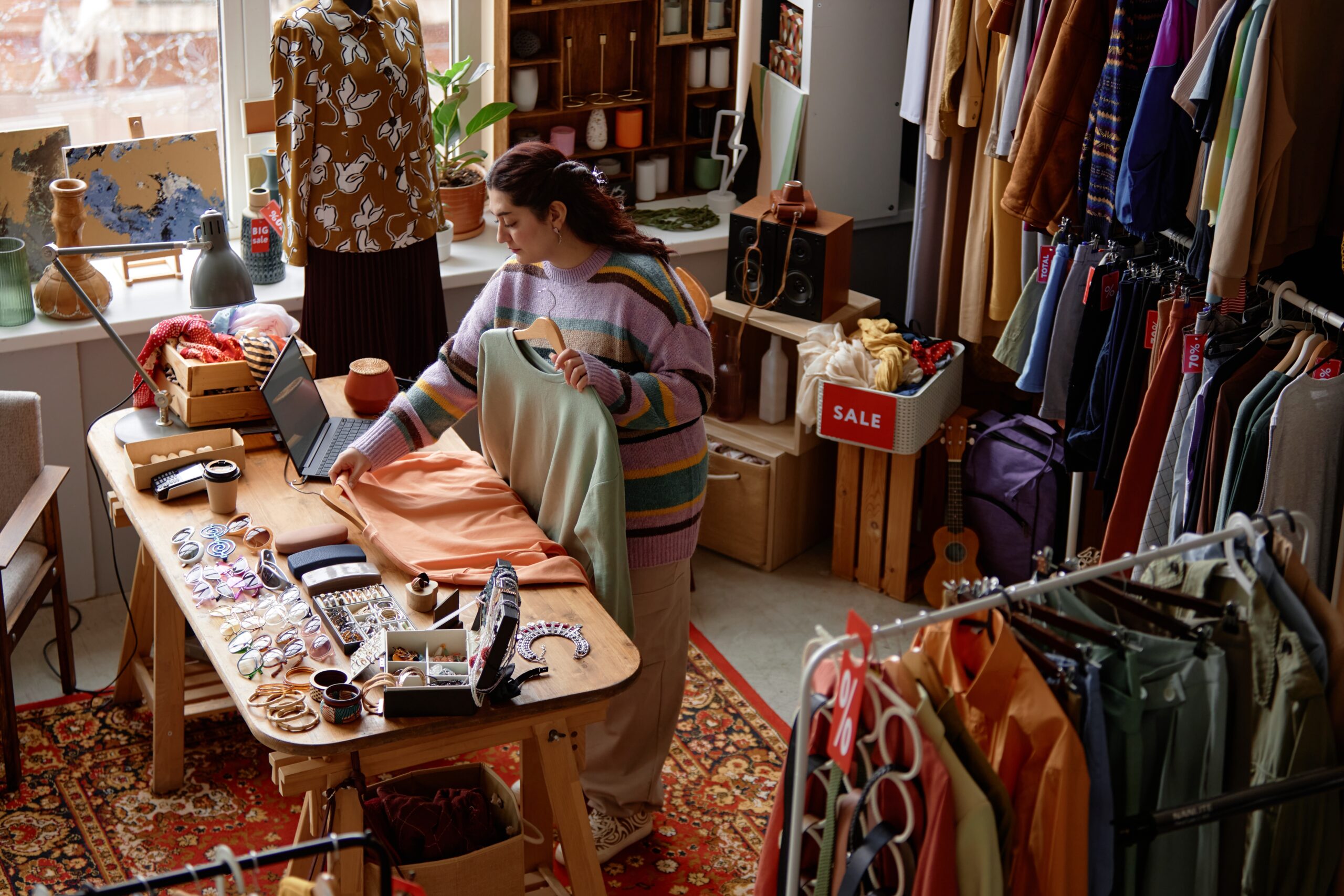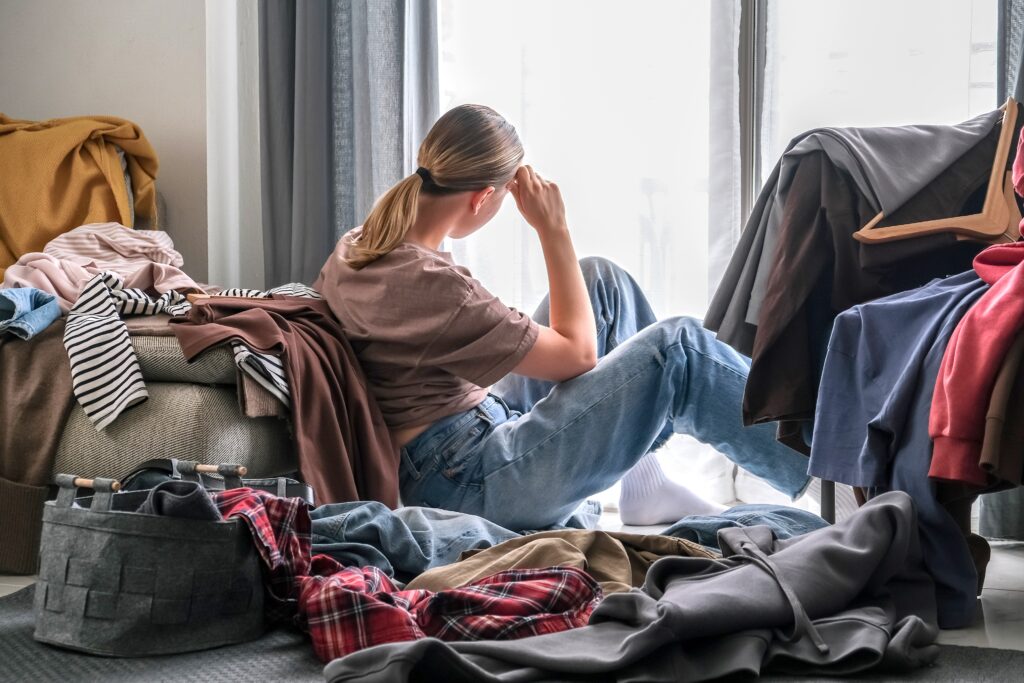
Thrifting Tips: How to Find Hidden Gems in Second-Hand Shops
There’s something deeply satisfying about finding that one-of-a-kind piece buried in a rack of clothes — a designer coat for a tenner, a vintage band tee that fits just right, or a handbag with history. Thrifting isn’t just budget-friendly — it’s sustainable, creative, and downright addictive (in a good way). But let’s be honest: it can also be overwhelming if you don’t know where to start. In this guide, we’ll show you exactly how to navigate second-hand shops like a pro and uncover the hidden gems that others walk right past.
Outline
- Why Thrift? The Joy and Value of Second-Hand Shopping
- Best Places to Thrift in the UK
- Before You Go: Prep Like a Pro
- In the Shop: What to Look For (and What to Avoid)
- 4.1 Clothing
- 4.2 Accessories
- 4.3 Homeware
- Spotting a Hidden Gem: The Golden Rules
- Try-On Tips and Alteration Ideas
- Cleaning, Caring and Styling Your Finds
- Final Thoughts: Patience, Practice, and Pure Luck
Why Thrift? The Joy and Value of Second-Hand Shopping
Thrifting isn’t just for students or quirky creatives anymore. It’s become a stylish, sustainable lifestyle move. Here’s why so many are embracing it:
- Eco-friendly: Reduces textile waste and carbon emissions
- Affordable: Score quality pieces for a fraction of the price
- Unique: One-off finds you won’t see on someone else at brunch
- Circular economy: You’re keeping clothes out of landfill and giving them new life
Fun fact: Buying a single pre-loved item reduces its carbon footprint by 82% compared to buying new.
Best Places to Thrift in the UK
Not all second-hand shops are created equal. Here’s where to look — both in person and online:
Top Charity Shops
- Oxfam – Trendy and well-curated, with a fab online store
- British Heart Foundation – Big stores with furniture and homeware
- Cancer Research UK – Great for occasion wear and accessories
- Barnardo’s – Often packed with hidden high-street gems
Vintage Boutiques
- Beyond Retro (London, Brighton) – Loud, fun, organised
- Blue Rinse (Leeds, Manchester) – Trendy 90s and Y2K fashion
- Cow (Nottingham, Birmingham) – Upcycled and vintage hybrid
Online Second-Hand
- Depop – Best for curated, styled looks
- Vinted – Bargains and bundles
- eBay – For patient hunters and brand lovers
- Vestiaire Collective – Designer and luxe pre-owned

Before You Go: Prep Like a Pro
A bit of planning makes a huge difference. Here’s how to get in the right mindset (and outfit):
- Make a wishlist – A mental or digital list of pieces you’d love to find
- Know your gaps – Do you actually need another floral blouse?
- Wear comfy clothes – Easy to change in and out of
- Bring a big bag – Some shops don’t provide bags
- Bring cash – Especially useful in smaller shops or markets
Top tip: Have a few outfit photos on your phone to help you match colours or styles while browsing.
In the Shop: What to Look For (and What to Avoid)
Clothing
Go for:
- Natural fibres like cotton, wool, silk – they age well and breathe better
- Structured items – blazers, coats, denim often hold up
- Timeless staples – white shirts, black trousers, Breton stripes
- Well-made basics – you’ll wear them again and again
Avoid:
- Anything that smells strongly of mould or smoke
- Items with heavy pilling or broken zips (unless you love a DIY project)
- Fast fashion pieces that are poor quality even second-hand
Check tags, seams and underarms for damage or poor stitching
Accessories
Yes, please:
- Belts (especially leather)
- Crossbody and shoulder bags
- Silk scarves
- Costume jewellery
Think twice about:
- Broken clasps or faded faux leather
- Very cheap sunglasses (safety hazard alert)
Homeware
Second-hand shops are goldmines for quirky kitchenware and vintage decor:
- Ceramic mugs, tea sets, vintage vases
- Coffee table books and cookbooks
- Frames you can repurpose
- Retro prints and artwork
Just give everything a thorough clean when you get home.
Spotting a Hidden Gem: The Golden Rules
So what separates a basic second-hand buy from a “how is this only £7?!” moment?
✔️ Fabric feels luxe or heavy
✔️ It looks expensive (and maybe is!)
✔️ Label checks out — mid-range or high-end
✔️ It fits your style, not just the trend
✔️ It needs little or no repair
🛑 Red flags:
- Clothes with mystery stains
- Jackets with strong shoulder pad smells (yes, it’s a thing)
- Shoes with cracked soles — they’ll fall apart, trust
Try-On Tips and Alteration Ideas
Don’t panic if it’s almost perfect. A few smart fixes can turn a “maybe” into a “must-have.”
Too big?
- Belt it
- Tuck it creatively
- Tailor it (it’s worth it for quality pieces)
Too long?
- Roll up sleeves or cuffs
- Chop those jeans (raw hems are trendy anyway)
- Shorten skirts with a local seamstress
Too dated?
- Change buttons
- Add a modern belt or layered jewellery
- Pair with on-trend items like trainers or a leather jacket
Basic sewing skills = thrift game changer. Even learning how to sew a hem or fix a zip makes a world of difference.
Cleaning, Caring and Styling Your Finds
Once home, give your gems some TLC:
Wash wisely:
- Use gentle detergent
- Air dry delicate fabrics
- For vintage pieces, try a soak in vinegar or baking soda to neutralise odours
Wipe leather goods with a cloth + leather conditioner
Disinfect accessories like earrings or hats
Steam vintage clothes to freshen up and de-wrinkle
Then, have a styling session! Try:
- Mixing vintage with modern (e.g. 80s blazer + white trainers)
- Layering textures (wool, silk, denim)
- Creating new outfits from old and new
📸 Snap pics of outfits you love — they’ll inspire you on future thrifting trips.
Final Thoughts: Patience, Practice, and Pure Luck
Thrifting is part treasure hunt, part style education, and part self-expression. You’ll walk out empty-handed some days — and other times, you’ll score a vintage Burberry scarf for a fiver.
The secret?
✨ Go often
✨ Keep an open mind
✨ Trust your gut (and your style)
Every item in a thrift shop has a story — and with the right eye, you can write the next chapter.